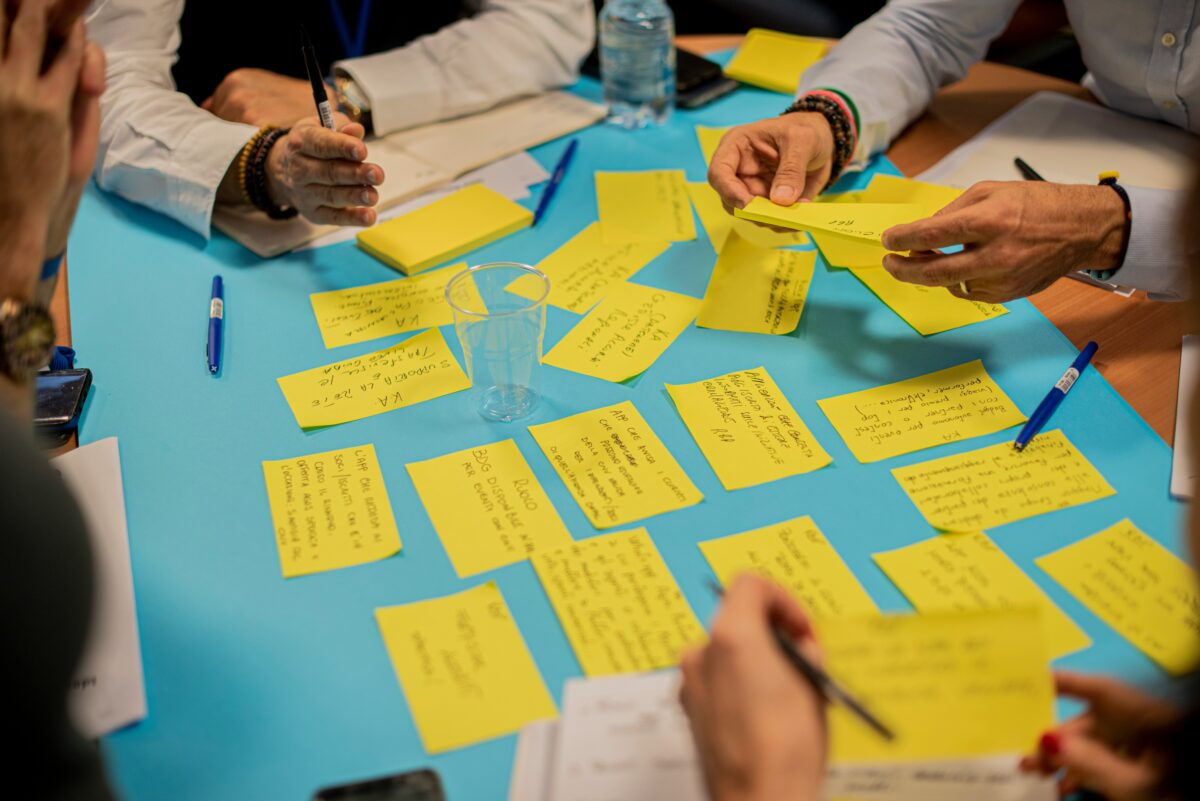Summary
- Enhanced Professional Growth: Microlearning supports consistent and gradual professional growth by allowing participants to engage in small, manageable learning sessions that are easy to fit into busy schedules.
- Increased Engagement: By focusing on smaller groups, micro-events promote a higher level of interaction and participation, leading to a 130% rise in employee engagement.
- Cost Efficiency: These events are generally less expensive to organize than larger conferences, making it feasible for companies to hold more frequent sessions, thereby reducing development costs by 50%.
- Improved Knowledge Retention: Microlearning addresses the Ebbinghaus Forgetting Curve by providing learning in a focused and recurring manner, which significantly boosts knowledge retention from 18% to 80%.
- Personalized Learning Experiences: The small scale of micro-events allows for a more tailored experience, meeting the specific interests and needs of each attendee, and enhancing personal connection and satisfaction.
- Effective Event Formats: Examples of successful microlearning formats include workshops, seminars, networking mixers, and interactive experiences, all tailored to maximize learning and engagement.
Big conferences are not enough alone to carry a successful professional development calendar. They’re great, but they can be exhausting, and they don’t come around often enough.
Microlearning is a way to bolster your professional development calendar. It’s bite-sized learning. Little and often, that’s the key.
Today, we’re convincing you why this will take your professional development event planning to the next level. We’ll even give you some ideas to take with you.
So dive in and get inspired folks!
The rise of micro events in professional development
Table of contents
- Internal micro events:
- Foster stronger working relationships due to smaller, more intimate groups.
- Examples include lunch-and-learn sessions, small-scale workshops, and internal training sessions.
- External micro events:
- Provide tailored experiences for targeted audiences such as clients, partners, and stakeholders.
- Examples include product launches, VIP events, and client appreciation gatherings.
BONUS ADVICE – You can discover even more amazing professional development topics here!
And by the way, you’ll also want to make note of the rise of virtual and hybrid events focused on microlearning. So make sure you’re clued up on the best virtual event platforms for 2024!
Advantages of incorporating microlearning into your event strategy
Companies turning to microlearning are seeing rises in employee engagement by 130%. They’re also seeing development costs fall by 50%.
Microlearning combats the Ebbinghaus forgetting curve. It elevates focus and knowledge retention rates, seeing an increase of 18% to 80%.
Here are some key advantages:
- Enhanced engagement and connection: Micro-events facilitate deeper interaction between attendees and hosts. With fewer participants, each individual has a greater opportunity to engage and contribute.
- Cost-Effectiveness: Organizing a micro-event is generally less costly than larger conferences. This cost efficiency allows organizations to host multiple events.
- With Sched’s new pricing plans, you can embrace microlearning without limits. Enjoy unlimited events and unlimited free participants for smaller gatherings all year round.
- Accessibility: Virtual platforms also allow for innovative formats like breakout rooms or focused workshops, enhancing the learning experience while making it accessible to people despite geographical limitations.
- Focused learning: Micro-events often concentrate on specific topics or skills. This allows for deeper understanding and immediate application of new knowledge.
- Networking opportunities: Smaller settings can facilitate more meaningful interactions and connections with other professionals in your field.
- P.S. Avoid these common problems with networking apps for greater microlearning!
- Personalized experiences: The intimate nature of smaller events allows for a more personalized experience. Here, content can be tailored to the specific interests and needs of the attendees.
- Enhanced collaboration: The close-knit environment of micro-events fosters collaboration and the exchange of ideas among participants. This leads to innovative solutions and partnerships.
- Skill specialization: Micro-events can focus on niche areas within a field. This allows professionals to specialize in certain skills or knowledge areas.
- Community building: Regularly participating in small-scale events can help build a tight-knit community of like-minded professionals.
- To see community building in action, meet CAUDLeading the Way!
- Flexibility: Micro-events can be quickly adapted to meet emerging needs or address specific industry updates. Smaller events offer more flexibility in format, timing, and location. This makes it easier to fit them into a busy professional schedule.
How to Create an Event Schedule that Will WOW Your Attendees from Sched Support on Vimeo.
Best practices for planning and executing micro events
When planning and executing micro-events, it’s crucial to focus on the core value from the attendee’s perspective. Start by defining clear objectives.
Here are some best practices:
- Venue and timing: Choose a central location that resonates with the event’s theme and ensures accessibility for all attendees. Consider different time zones if the event has a virtual component to maximize participation.
- Technology and engagement:
- Partner with a reliable event technology provider. This ensures a seamless experience.
- Use digital channels to amplify in-person interactions. This keeps the audience engaged through creative activities like live polls.
- Networking and feedback:
- Offer a mix of group networking and one-on-one interaction opportunities. This can be structured through breakout sessions or scheduled meet-ups.
- Encourage ongoing dialogue by sending conversation prompts before the event and gathering feedback afterward to refine future micro-events.
BONUS ADVICE – The best hacks for mastering in-person events!
Measuring the success of your microlearning

Measuring the success of microlearning involves a detailed analysis of various metrics. Here are some essential metrics to consider:
- Financial and engagement metrics:
- Event costs and revenue: Track gross revenue, cost-to-revenue ratio, and revenue by promo codes.
- Leads and conversions: Monitor sales qualified leads (SQLs), pipeline generated, and accounts influenced. This is especially important for B2B marketers.
- Engagement: Evaluate engagement through metrics like live polling response rates, social media mentions, and session analytics.
- Participant metrics:
- Demographics and attendance: Analyze attendee demographics, total registrations, and attendance over time to understand audience composition and growth.
- Feedback metrics: Use net promoter score (NPS), event surveys, and speaker ratings to gauge participant satisfaction and speaker performance.
- Operational and long-term impact metrics:
- Operational efficiency: Examine metrics such as event check-ins, app adoption rates, and live webinar drop-off rates to evaluate operational success.
- Long-term impact: Assess knowledge application, quality of work, and number of errors post-event to determine the lasting impact of the micro-event.
Why Should I Switch to Sched’s Event Management Software? from Sched Support on Vimeo.
Examples of effective microlearning formats
Micro-events, by their very nature, offer a versatile format that can be tailored to various professional needs. This ensures each session is both engaging and informative. Here are some effective formats that have shown great success:
- Expert Workshops and Seminars: These are ideal for deep dives into specific subjects. This allows attendees to gain advanced knowledge and skills in a particular area.
- For instance, a tech company might host a series of micro-events featuring short, intensive coding workshops that cater to different experience levels.
- Networking mixers and roundtable discussions: These formats facilitate personal connections and focused discussions on industry-relevant topics.
- A real-life example includes a series of virtual mixers organized by a marketing firm, connecting small groups of professionals with leaders in the field for candid discussions about the future of digital advertising.
- Themed interactive experiences: Whether it’s a virtual reality demonstration or a live cooking class, themed events create memorable experiences that can boost engagement and enjoyment.
- For example, an event management company might host a virtual reality tour of a new venue, offering attendees a unique way to experience the space remotely.
BONUS ADVICE – Discover even more amazing small event ideas to boost your microlearning today!
The takeaways
Now you know what the power of microlearning can do for you!
And you also know that with Sched’s new pricing, you can plan your microlearning without limits. You’ll enjoy unlimited events and unlimited free participants for smaller gatherings all year round.
Plus, you can start Sched for free now!








